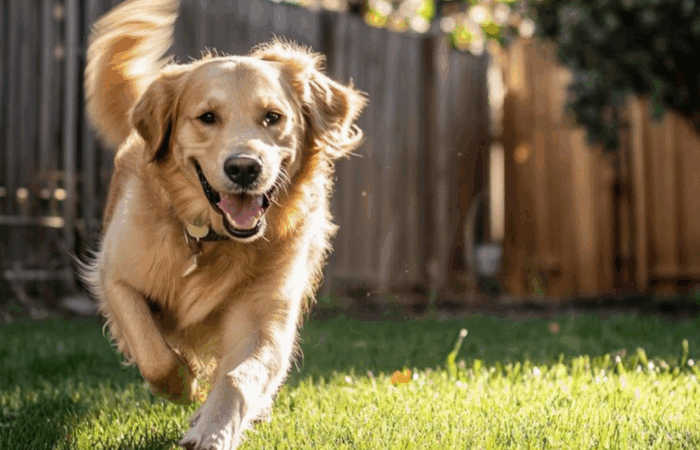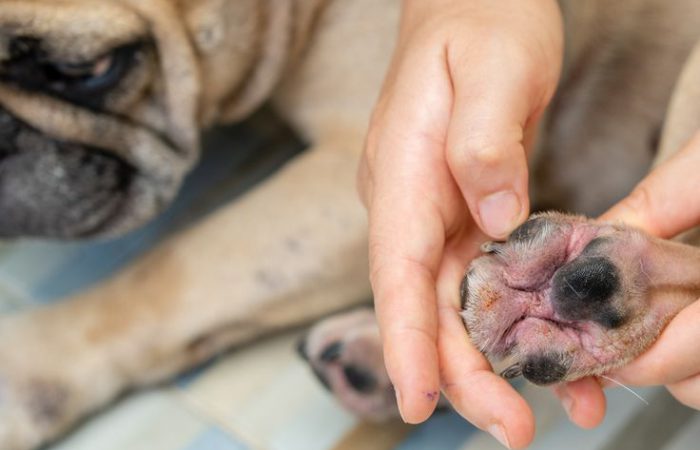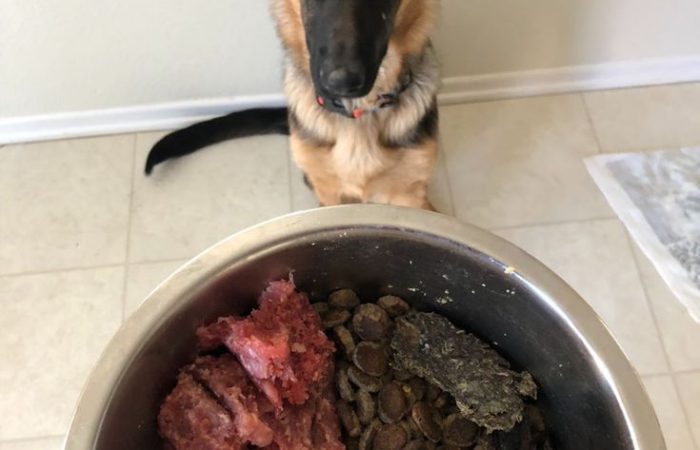Dogs, as descendants of wolves, have evolved as carnivores with specific nutritional requirements designed to fuel their active, meat-based diet. While domestication has slightly altered their eating habits, their biological need for fresh, unprocessed, and nutrient-dense food remains largely the same. As pet owners become more conscious of their dog’s health, raw feeding has emerged as a popular method that closely mimics a dog’s natural diet. But how does raw feeding meet the nutritional needs of dogs, and why might it be beneficial compared to processed commercial diets?
In this blog, we’ll break down the nutritional requirements of dogs and explore how raw feeding meets those needs.
The Core Nutritional Needs of Dogs
Dogs require five essential nutrients to thrive: protein, fats, vitamins, minerals, and water. These elements work together to promote healthy bodily functions, maintain energy levels, and support growth and repair.
- Protein:
- Role: Protein is the building block of tissues, muscles, and organs. It is also critical for the production of enzymes, hormones, and antibodies.
- Sources in Raw Diet: Raw meat (muscle, organ meats like liver and kidney) and bones provide high-quality, easily digestible protein that aligns with a dog’s natural dietary preferences. Unlike processed kibble, which often uses plant-based protein sources, raw feeding prioritizes animal protein, which is more bioavailable and suitable for a dog’s physiology.
- Fats:
- Role: Fats are a concentrated source of energy and are necessary for healthy skin, a shiny coat, and brain function. Essential fatty acids, such as omega-3 and omega-6, also have anti-inflammatory properties.
- Sources in Raw Diet: Fats are naturally found in raw meats, particularly from animals like fish, beef, and poultry. Raw feeding provides a balanced ratio of omega fatty acids, supporting a dog’s skin health, coat, and immune system.
- Carbohydrates:
- Role: Carbohydrates can provide energy, but unlike humans, dogs don’t have a biological requirement for carbohydrates in their diet, nor are they designed to process them. Their bodies are designed to derive energy from protein and fat.
- Sources in Raw Diet: Most raw feeding practices minimize or exclude carbohydrates like grains, starches, and fillers that are common in kibble. Instead, raw diets emphasize nutrient-dense animal products and, in some cases, small amounts of vegetables or fruit for fibre and antioxidants.
- Vitamins:
- Role: Vitamins are essential for metabolic function, immune system support, and overall health. Key vitamins for dogs include vitamin A (for vision and skin health), vitamin D (for calcium absorption), and vitamin E (an antioxidant).
- Sources in Raw Diet: Raw feeding provides these vitamins in their natural form, directly from fresh ingredients like organ meats (rich in vitamin A), fatty fish (high in vitamin D), and muscle meats (containing vitamin E). In contrast, commercial pet foods often add synthetic vitamins to replace those lost during the cooking and processing stages.
- Minerals:
- Role: Minerals such as calcium, phosphorus, magnesium, and zinc are crucial for bone development, nerve function, and enzyme activity.
- Sources in Raw Diet: Bones are a rich source of calcium and phosphorus in a raw diet, and other minerals can be found in organ meats and muscle tissue. When feeding raw, the natural balance of minerals, particularly calcium and phosphorus, is maintained without the need for artificial additives.
- Water:
- Role: Hydration is essential for all bodily functions, from digestion to temperature regulation.
- Sources in Raw Diet: One often overlooked advantage of raw feeding is the high moisture content in raw meats. Unlike dry kibble, which can lead to dehydration, raw diets naturally provide hydration, supporting kidney health and proper digestion.
How Raw Feeding Meets These Nutritional Needs
Feeding raw offers a biologically appropriate diet that closely aligns with the natural needs of dogs. Here’s how raw feeding meets these nutritional requirements and offers benefits over traditional processed food:
- Natural, Whole Foods:
- Raw feeding provides whole, unprocessed foods that are minimally altered, preserving the integrity of essential nutrients. This allows dogs to receive vitamins, minerals, and other nutrients in their most bioavailable forms, meaning they are easier for the body to absorb and utilize.
- Bioavailability and Digestibility:
- Because raw foods are more natural and species-appropriate, they are more easily digested by dogs compared to highly processed kibble. Many commercial foods contain fillers, such as corn, wheat, and soy, which can be hard for dogs to digest and offer little nutritional value. A raw diet reduces the strain on a dog’s digestive system, resulting in smaller, firmer stools and less bloating or digestive upset.
- Balanced Calcium and Phosphorus:
- One of the most critical components of raw feeding is the inclusion of soft raw meaty bones, which provide a natural and balanced source of calcium and phosphorus. These minerals are crucial for strong bones, teeth, and overall skeletal health. In contrast, many commercial pet foods use calcium supplements, which may not be as effectively absorbed or utilized by the body.
- Essential Fatty Acids for Skin and Coat Health:
- A raw diet rich in natural fats and oils helps dogs maintain a healthy, glossy coat and supports skin health. Omega-3 fatty acids, found in fatty fish or fish oil, can reduce inflammation, combat allergies, and improve the overall condition of your dog’s skin and fur.
- Improved Dental Health:
- Chewing on raw, meaty bones acts as a natural toothbrush for dogs, scraping away plaque and tartar while promoting healthy gums. Dental health is an often-overlooked aspect of nutrition, but a raw diet can greatly reduce the risk of periodontal disease, which is common in dogs fed kibble.
Addressing Common Concerns About Raw Feeding
While the benefits of raw feeding are numerous, some pet owners are concerned about safety, convenience, and ensuring a balanced diet. Here’s how raw feeding addresses those concerns:
- Safety and Hygiene:
- Raw feeding requires careful handling and storage to avoid contamination. Sourcing high-quality, fresh ingredients can minimize risks. Many raw feeders also freeze their meat before feeding to reduce the risk of bacteria.
- Nutritional Balance:
- Some pet owners worry about achieving the right nutritional balance in a raw diet. To ensure a balanced diet, it’s important to include a variety of proteins, organ meats, bones, and supplements. Aunty Jo’s sources their raw meals from Canine Country, a reputable brand in the raw dog food industry. Their BARF meals are formulated to meet a dog’s nutritional requirements, taking the guesswork out of meal prep. Rotating the different flavours around as much as possible is also recommended to help balance out the diet over time.
- Convenience:
- While preparing raw food can take more time than simply scooping kibble, many raw feeders find that the health benefits for their dogs are worth the effort. Additionally, pre-made raw BARF meals make raw feeding more convenient for busy pet owners.
Final Thoughts: Meeting a Dog’s Nutritional Needs with Raw Feeding
A raw diet closely aligns with the natural diet of dogs, offering balanced, nutrient-dense meals that are easy to digest and biologically appropriate. By focusing on whole, natural ingredients, raw feeding provides dogs with high-quality protein, healthy fats, and essential vitamins and minerals in their most natural form. Raw feeding offers numerous health benefits, from improved digestion and dental health to better coat condition and immune support.
Ultimately, feeding raw can be an excellent way to meet your dog’s nutritional needs and promote long-term health and vitality. Whether you choose to prepare raw meals at home or opt for pre-made raw options, you can feel confident knowing that you’re providing your dog with the best possible nutrition.




